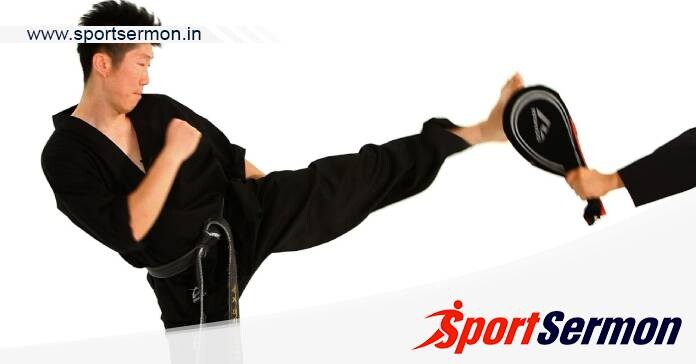Muay Thai Kicks: Extreme flexibility is needed to perform some of the most complex techniques in Muay Thai, a martial art and sport, such as the body kick and head kick. In Muay Thai, the knees, elbows, and shins are employed as weapons.
To solidify this range of motion, kicking requires a lot of practice. Hip aeroplane workouts and single-leg Romanian deadlifts improve hip extension strength and mobility as well as hip stability when internally and externally rotating, which helps you kick higher in Muay Thai.
Strong kicks are crucial to your success since skilled kickers have an edge. We’ll look at a few of the types of Muay Thai Kicks that you should be aware of in this post.
How Many Types of Muay Thai Kicks in MMA?
1. The Roundhouse Kick
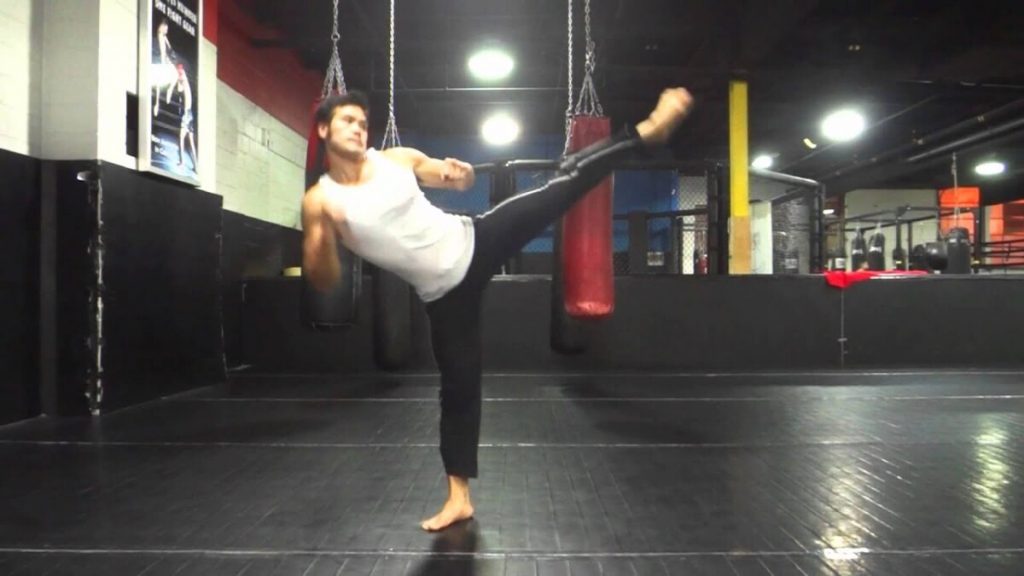
Within the discipline of Muay Thai, the Roundhouse Kick is an extremely powerful move. Every Muay Thai fighter’s toolkit should include this kick, which is well-known for its strength and efficiency.
The roundhouse kick mostly strikes the opponent’s head, legs, or ribs with a whip-like action that originates at the hip. In Muay Thai fighting, this kick has the potential to be fatal due to its incredible force and speed. But skill, dexterity, and nimble feet are necessary to pull it off.
You might also be interested in reading this: Top 8 MMA Welterweights in History
2. The Front Kick (Teep)

In Muay Thai kickboxing, the Front Kick sometimes referred to as the “Teep,” is a commonly employed technique that is an invaluable addition to any fighter’s arsenal. Rather than kicking as you typically would, you push your foot forward and collide with your opponent.
The Teep’s many applications are what make it so beautiful. It may be used as a strong aggressive move that can take out your opponent’s breath, but it can also be used to keep a safe distance and throw off their rhythm. The Front Kick is a skill that requires time and accuracy, but when used properly, it may transform the course of fights.
3. Diagonal Kick (Tae Chiang Kao)
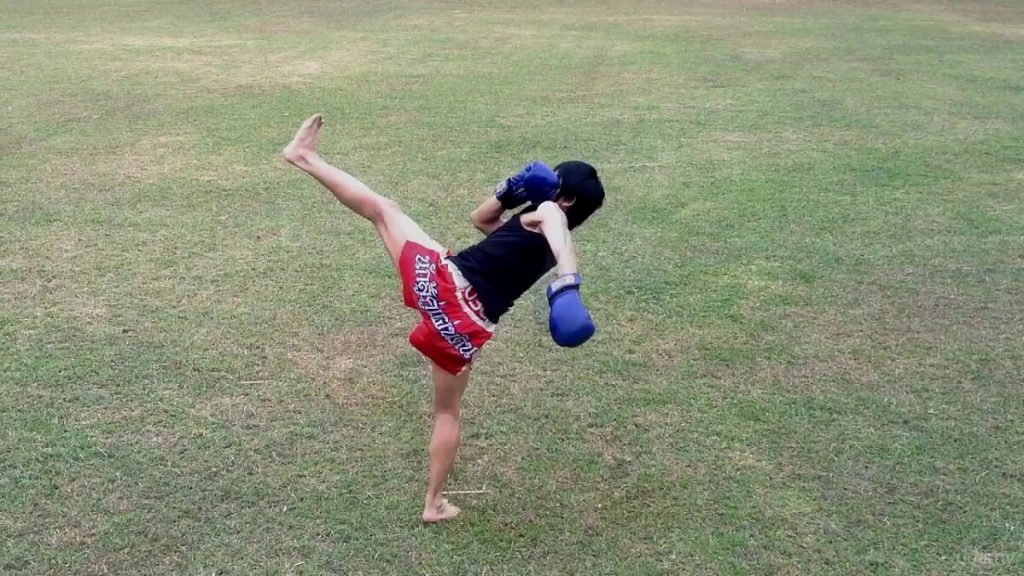
The diagonal kick, often known as the sidekick, is next on our list. This is also one of the fundamental kicks you need to master in order to identify as a Muay Thai fighter. You’ll be shocked by the amount of force you can produce with it. Since your hips will also be involved, you may exert additional force by making a diagonal strike, which involves flinging your leg at an angle.
With this kick, the leg is lifted diagonally and directed at the opponent’s head or body. It may be thrown from a variety of angles, including the lead side or back.
Waiting for the opposition to advance, which you can block with a parry, is one of the strongest setups for the diagonal kick. You will then be able to take advantage of the opponent’s exposed body by launching a diagonal kick.
This kick allows for creative expression. If your opponent strikes you, you can use whatever defensive manoeuvre you know of to block the blow and counterattack with a diagonal kick. With a great deal of force, you can strike the opponent’s head or body, depending on whatever section he exposes.
4. Axe Kick
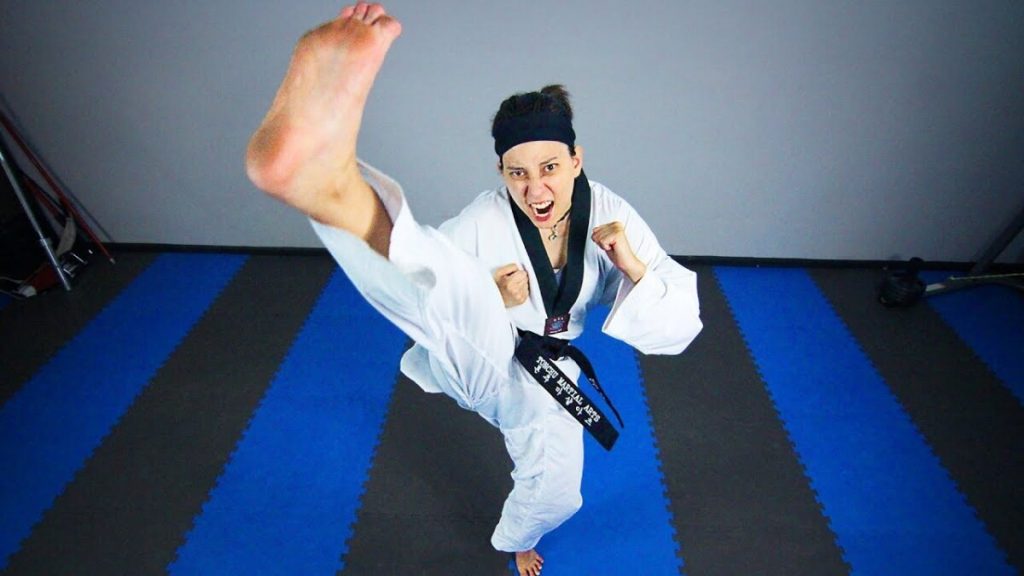
We’ll start by going over the axe kick. Due to the fact that you will be lifting your leg before making contact with your opponent, it is one of the most powerful kicks in Muay Thai. As a result, if you know how to employ this kick, breaking your opponent’s collarbone is one of the finest targets you may select.
The axe kick is a downward blow that goes for the head or collarbone of the adversary. The leg is brought down hard and elevated high, like when an axe is cutting wood.
One of my favourite kicks is this one because it gives you a different perspective to hit your opponent. Still, there are some circumstances in which it’s appropriate to apply [quite seldom]. As a result, you should definitely become acquainted with every kick on this list.
In any case, you need to prepare the axe kick. A jab is one of the finest methods to do it as it will confuse your opponent. After that, you have two options: you may pretend to kick low and swing your leg in a circle, or you can raise your leg straight up and land it on your opponent.
5) Low Kick (Tae Chiang)

The low kick is one of the more widely utilised and well-liked kicks in Muay Thai. It’s quite effective for two reasons: one, it’s easy to learn, which is why a lot of Muay Thai fighters start with it; second, it’s really effective.
So, after you understand it, you’ll be able to use it right away. I have a special place in my heart for it since it was the first kick I ever learned. I maintained my Thai Boxing career long after I started since I found learning it to be so enjoyable.
This kick delivers a horizontal hit to the lower leg or thigh of the opponent. Its goal is to restrict the opponent’s movement and weaken their leg. If you execute it right, you’ll strike the delicate areas of your opponent’s leg, which will hurt like hell. Once more, this will restrict their movement and give you the upper hand in combat.
6) Teep (Push Kick)
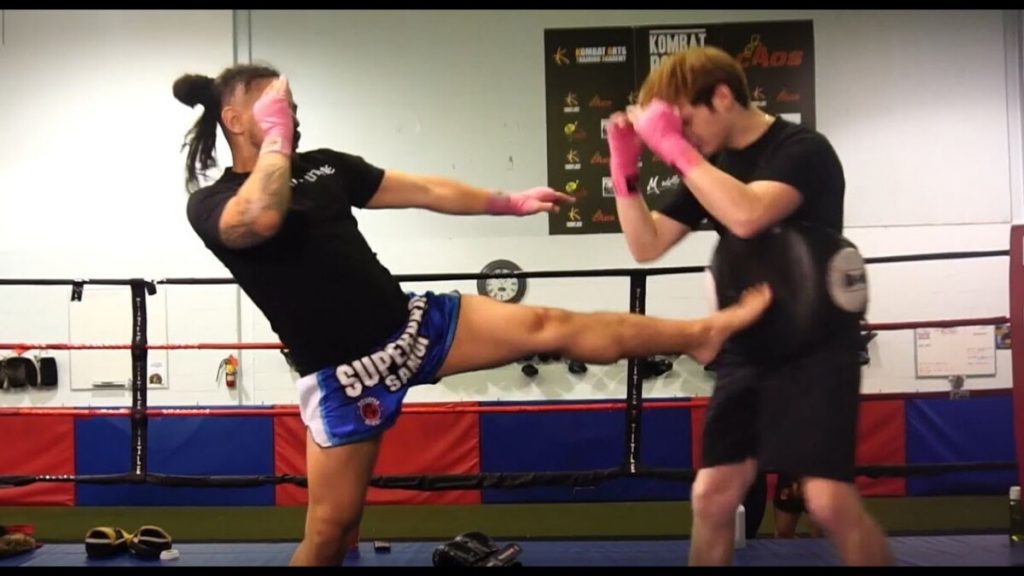
The push kick, also known as Teep, is the next kick we’ll go over. Kickboxing, Takedowndo, Karate, Kung Fu, Muay Thai, and even Kickboxing, it’s one of the most well-liked strikes. This might undoubtedly be the kick you need to study first if you’re seeking one!
The Teep is a front kick in which the foot is propelled straight forward with the intention of pushing the opponent away or unbalancing them. Either the lead or the back leg might be used for it. The body of your opponent is the target you should aim at.
It works best when you push your opponent and throw off their rhythm and equilibrium. It’s also a great way to start a combination, particularly at first. Additionally, it may act as a connection between combinations and an aggressive tactic to scare your opponent so you can strike again.
Using the Teep to the fullest is another crucial step in this situation. Recall that your objective is to press the other player, causing him to stray and slow down. In other words, it’s not enough to just make contact; you also need to extend your leg and keep pressing your opponent after you’ve made contact with their body. If you make sure to follow through, you will be able to exert a lot more pressure and direct force.
What Are The Best Kicking Combinations in Muay Thai?
We can move on to the next phase of our kicking adventure by learning about combos now that you can perform each kick to a reasonable degree. A fundamental talent for any Muay Thai fighter is the ability to employ combos.
Should you not mix techniques, you will not be able to inflict enough harm on your opponent. It is imperative that you acquire the skill of combining offensive strategies that will ultimately strengthen your offensive and defensive capabilities.
For that reason, these are the top Muay Thai combos that just use kicking techniques.
- Lead Roundhouse Kick-Rear Roundhouse Kick: With a lead roundhouse kick, begin by kicking the opponent’s legs or midsection. Immediately thereafter, utilise the opposing leg to deliver a rear roundhouse kick to the same or a different target area.
- Teep-Rear Kick: Commence with a lead teep, often referred to as a push kick, to create space and upset your opponent’s equilibrium. As soon as the teep retracts, immediately transition to a powerful back kick, such as a roundhouse or straight kick, aimed at the chest or legs.
- Lead Roundhouse Kick-Switch Kick: Switch kick to start the combo. After adjusting your stance, utilise your new lead leg to deliver a roundhouse kick that targets your opponent’s legs or stomach.
- Rear Body Kick-Rear Head Kick: To begin, kick from behind, aiming at the midsection of your opponent. As soon as the opponent lowers their guard or responds to the body kick, aim a powerful rear head kick at their head.
- Lead Low Kick-Rear Roundhouse Kick: To weaken the opponent’s base, begin by delivering a lead low kick to their thigh or lower leg. A strong rear roundhouse kick aimed at the body or legs should come next.
- Lead Head Kick-Rear Low Kick: Take aim for the head or neck region of your opponent with the lead head kick. Immediately after retraction, kick low in the back to strike the opponent’s leg or thigh.
Muay Thai, also known as the art of 8-limbs, requires constant practice and knowledge of the kick. If you learn them right, you’ll be able to do a great deal of damage. For example, your opponent is less likely to walk correctly after you strike him with two consecutive low kicks.
You should thus become proficient in the kicking methods covered in this article. Of course, start with the low kick and work your way up to the more difficult ones, like the axe and roundhouse kicks.

